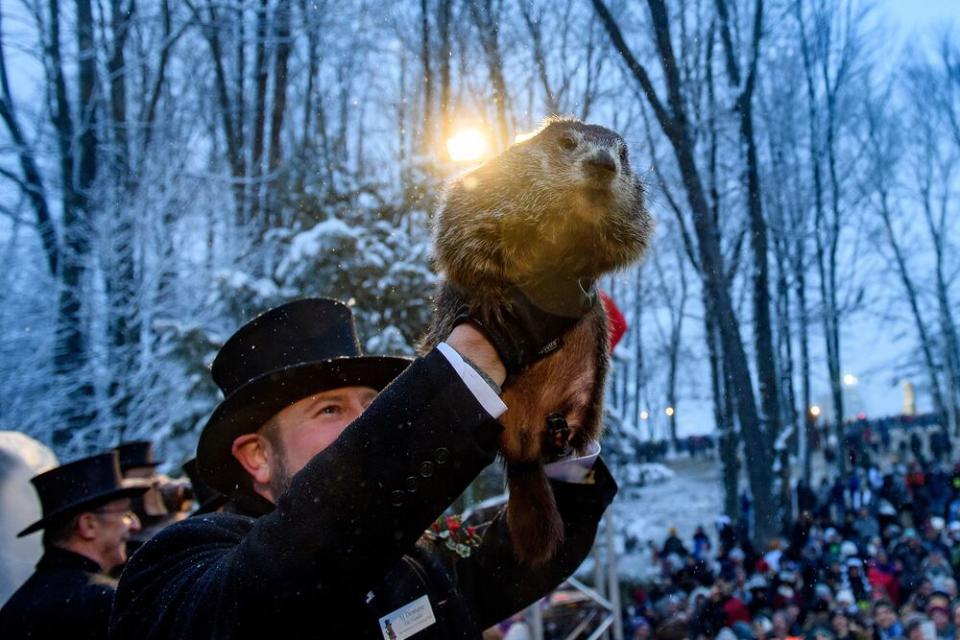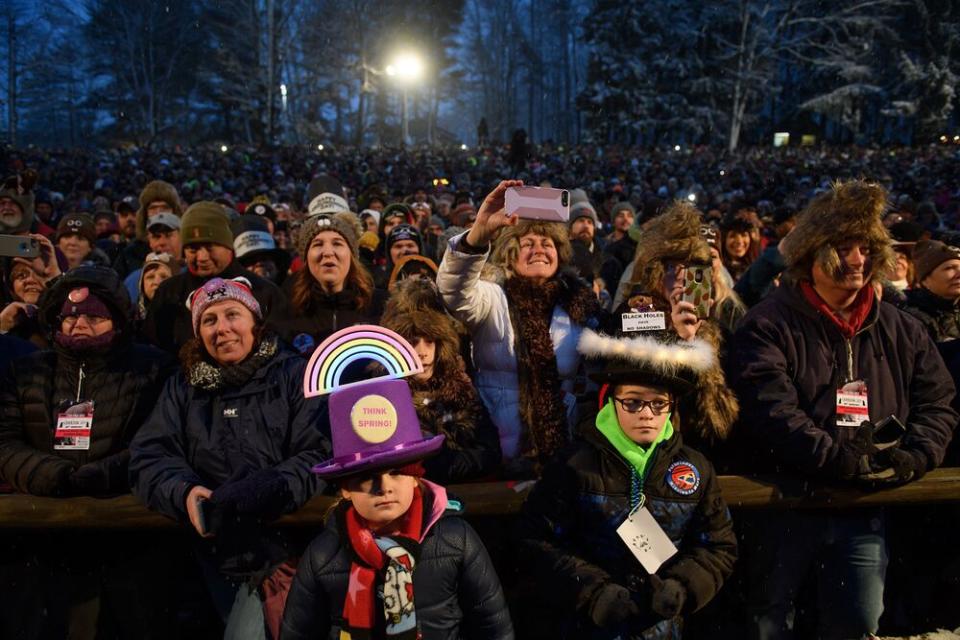Happy Groundhog Day! Punxsutawney Phil Does Not See His Shadow, Predicts Early Spring
To kick off Groundhog Day on Saturday, Punxsutawney Phil emerged from his slumber at 7:30 a.m. and did not see his shadow, which means an early spring is supposedly on the horizon.
“Now my forecast on a day that’s a palindrome will cause some to cheer and some to moan. So do I hope you think it’s neighborly, for there is no shadow of me, spring it’ll be early, it’s a certainty,” a member of Phil’s Inner Circle read from a scroll to cheers and applause from the crowd, according to CNN.
However, Phil’s predictions may have to be taken with a grain of salt. According to the National Oceanic and Atmospheric Administration, he is only right 40 percent of the time.
“You’re better off trying to decide what the rest of February and March will look like by flipping a coin,” said CNN meteorologist Judson Jones.
Punxsutawney Groundhog Club records also show that Phil is far more likely to see his shadow and has only predicted an early spring 20 times in the last 133 years.
RELATED: Is Bill Murray Reliving Groundhog Day for Jeep’s Super Bowl Ad? Seems Like It!

RELATED: Bye Bye Winter? Punxsutawney Phil Predicts an Early Spring on Groundhog Day
In 2019, Phil also did not see his shadow and predicted an early spring. However, the U.S. saw below-average temperatures in both February and March of last year.
This year marks the 134th Groundhog Day celebration, which occurs annually at Gobbler’s Knob in the 5,500-person town of Punxsutawney, Pennsylvania.
According to the Pennsylvania Tourism Office, as many as 30,000 people visit the tiny town annually to watch Phil make his prediction.
The origins of Groundhog Day date back to the early days of Christianity in Europe, according to the Pennsylvania Tourism Office.
Born of a winter festival called Candlemas Day, the celebration found churchgoers bringing candles to be blessed. If the skies were clear, it meant an extended winter was in the forecast.

RELATED: 5 Burning (Burrowing?) Questions About Groundhog Day, Answered
In the U.S., Groundhog Day dates back to the 18th and 19th centuries. Pennsylvania German settlers pulled the tradition from European weather lore that used the appearance of hibernators, like badgers, as a sign it was time to prepare for spring. The Pennsylvanian German folk had to work with their surroundings, and so they decided on the groundhog to replace the traditional European animals.
Punxsutawney Groundhog Club records date back to 1887.
Punxsutawney Phil is protected and cared for by the Groundhog Club. The president of the group is the individual who gets the privilege of hearing Phil’s prediction in “Groundhogese” and translating it for the public.
The unique holiday also inspired the popular 1993 film Groundhog Day, starring Bill Murray as a weatherman who finds himself stuck in a time loop, forcing him to relive the same day over and over again.

